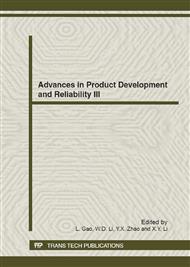p.182
p.188
p.194
p.200
p.206
p.212
p.218
p.223
p.229
Engineering Design Based on Hammersley Sequences Sampling Method and SVR
Abstract:
Nowadays, computer-based engineering design is becoming widely used in the design of products. In the field of engineering, CAD model, FEM method and surrogate model are used to reduce the time and computational cost comparing with the traditional engineering design. But when facing with computationally expensive tasks, such design method mentioned above seems unable to deal with such tasks. In that case, surrogate model is gradually used and shows great potential in dealing with the computationally complex tasks. Although computing power and speed are rapidly growing, the use of the computer simulation analysis is limited in doing engineering design and some other analysis such as reliability analysis for complex product, so that it limits the use of metamodeling techniques. In that case, we use space-filling DOE sample method to support the construction of surrogate model. In this paper, we consider both Hammersley sequences and SVM as sampling method and surrogate model to construct the simulation design model, aiming at reduce computational costs. SVR achieves more accuracy and shows great potential in application in the design of complex and computationally expensive tasks.
Info:
Periodical:
Pages:
206-211
Citation:
Online since:
June 2012
Authors:
Keywords:
Price:
Сopyright:
© 2012 Trans Tech Publications Ltd. All Rights Reserved
Share:
Citation:


